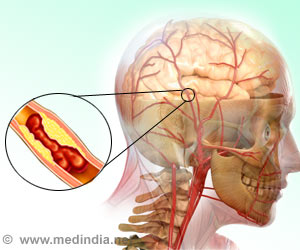A team of researchers have shown that rabies in mice can be treated even after it has reached the brain, a point when the disease is most fatal.
Immunology researchers at the Kimmel Cancer Center at Jefferson found that by opening the central nervous system’s (CNS) protective blood-brain barrier, dominant infection fighting substances can swarm in to fight the invading virus.The team believes that more understanding of the process can result in improved treatment for late-stage rabies infections in humans.
“The findings indicate that delivering immune system ‘effector cells’ – T and B cells – to the CNS can reverse an otherwise lethal rabies infection even after the virus has reached the brain,” says D. Craig Hooper, Ph.D., associate professor of cancer biology at Jefferson Medical College of Thomas Jefferson University in Philadelphia, who led the work.
“While that’s not a practical way to help infected humans, finding a method to open the blood brain barrier may be crucial to saving a person who is already showing clinical signs of rabies infection, where a vaccine is useless,” Dr Hooper added.
The scientists compared silver-haired bat rabies infections in two strains of mice, PLSJL mice and 129/SvEv mice. They found that the PLSJL mice, which genetically produce less inflammatory-regulating hormone, were less likely to die from the rabies infection, possibly because they are more prone to develop a stronger inflammatory response and more likely to have opened brain barriers. Conversely, they also found that despite a strong immune response, the rabies-infected 129/SvEv mice died and were less likely to have open barriers.
When they gave the PLSJL mice the anti-inflammatory steroid hormone DHEA, the brain inflammation decreased, the barrier’s permeability lessened, and the death rate more than doubled.
Advertisement
“In the future, one of the things we want to do is tone down the inflammatory response caused by EAE and minimize the pathogenesis, yet deliver immune cells to the CNS,” says Dr. Hooper, who is also associate director of Jefferson’s Center for Neurovirology.
Advertisement
While they would like to try to understand the mechanism of the blockage, he notes, the work has larger implications. “Such studies should tell us a lot about more fundamental problems. Barrier integrity is important in Alzheimer’s, Parkinson’s, MS, and delivering immune factors in brain cancer.”
“A good example of how the immune system should work to clear something from the CNS, understanding how this system works should help us deal with other diseases.” “In opportunistic CNS infections such as Epstein-Barr Virus and measles, the immune system often causes damage getting rid of the virus. Understanding how to vent the damage and get rid of the virus is very important.”
The report is published in August 2007 issue of the Journal of Virology.
Source-ANI
LIN/C








